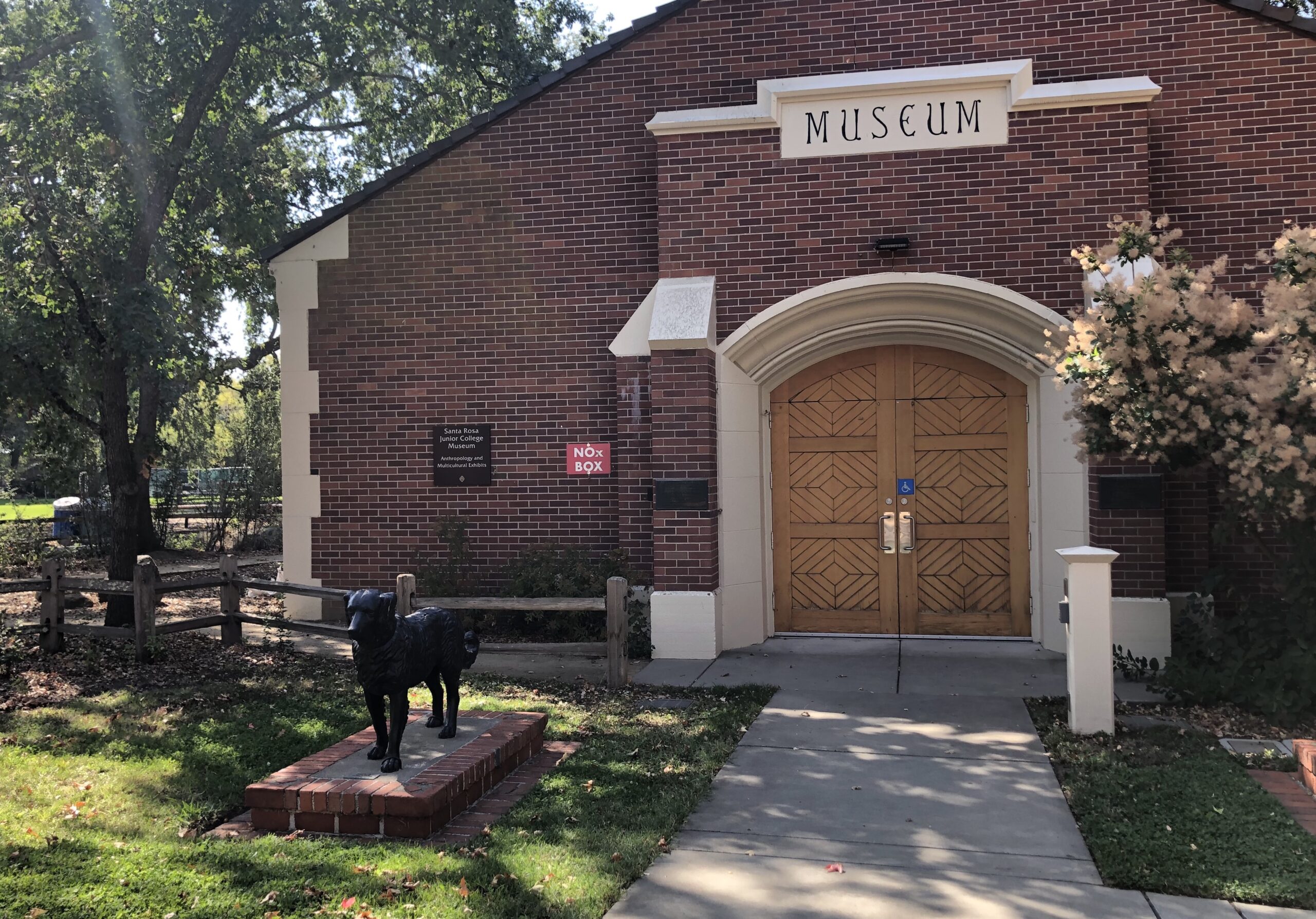On April 13, 2021, the Santa Rosa Junior College (SRJC) Board of Trustees unanimously voted to remove the name of Jesse Peter, Jr. from its on-campus museum six months after receiving a letter from local Native American tribal officials urging them to make the change.
Peter was an amateur anthropologist who reportedly collected hundreds of Native American artifacts throughout his life and helped found the SRJC’s museum. The Board of Trustees’ decision comes during a period of renewed discussion nationwide about the removal of the names of historical figures from public institutions.
Unlike other North Bay renamings, such as San Rafael’s decision to drop the name of Sir Francis Drake from a local high school last year, the SRJC’s Trustees’ vote drew little public attention or debate, although the decision was listed in an agenda for the April 13 Trustees’ public meeting.
The museum, which currently houses a collection of over 5,000 historic photographs, documents and Native American cultural items relevant to Sonoma County, was built in 1938 after a Works Projects Administration Grant was awarded to then-SRJC President Floyd Bailey and Peter, according to SRJC’s website.
Until his death in 1944, Peter served as the museum’s director and curator. In the same year of his passing, the Board of Trustees voted to name the museum in honor of the late collector.
However, Peter’s archaeological practices have come into question in recent years. Jeff Elliot, a Sonoma County-based historian and journalist, wrote in a 2011 blog post that when he “mentioned [Jesse Peter] to archeologists, 2 out of 4 dismissed him using the same description: ‘Pothunter,’ which is an insult that ranks at the bottom near ‘grave robber…’”
Elliot’s blog post also credits Peter with the “discovery” and donation of over 600 items, including rocks, fossils and Native American artifacts, to the University of California, Berkeley.
A letter sent to SRJC President Dr. Frank Chong last August expressed local tribes’ desire for Peter’s name to be removed from the museum. The letter was signed by chairs of neighboring Sonoma County tribal nations, including Dry Creek Rancheria, Cloverdale Rancheria, Stewarts Point Rancheria and Lytton Rancheria.
“We support the SRJC’s mission of inclusivity and diversity,” Greg Sarris, Tribal Chairman for Graton Rancheria, wrote. “However, the SRJC and the museum must recognize that Jesse Peter does not embody that mission.”
Sarris further described Peter as a “white man who pursued his hobby of collecting Native American cultural items for his own pleasure and procurement.”
In an interview with the Bohemian, Chong said that the SRJC Board of Trustees felt the name no longer represented the vision and mission of the junior college, which he said is prioritizing “multiculturalism, inclusivity and celebrating diversity” among its student body. He added that the SRJC plans to reinstate its Ethnic Studies program within the next two years.
“The college, when I first came here, was majority white [students],” Chong said. “Fast forward ten years, the college is now a majority [students] of color. Our values should reflect that.”
As for Peter’s legacy and the name removal, Chong said “It’s a much more complicated history than what we read about in textbooks.”
The Board of Trustees’ handling of the issue did draw some ire, primarily from SRJC faculty member Michael Von der Porten. Von der Porten, who describes himself as a concerned citizen and community member, stated during a Board Facilities Committee meeting in early August that he was “disappointed [the committee] did not take the issue to a broader audience”.
“[The junior college] missed the opportunity to be forthcoming, to engage the community and to have a discussion,” he said. “There was an opportunity to discuss, how bad does someone need to be to have their name stripped off of a building? None of us are perfect.”
He further alleged that the board’s actions in not publicizing the letter from Graton Rancheria until after the April 13 meeting was an effort to obfuscate the reason for the name change.
SRJC officials stated that the letter was publicly available and that it was excluded from the April 13 meeting due to time restraints.
“We are a transparent public institution,” Erin Bricker, the Director of District & Community Relations at SRJC, told the Bohemian. “[The letter] was something that was part of the conversation. There’s no standard that says, ‘this must be presented at a board meeting.’”
While Bricker states that the letter was not the primary reason for the removal of Peter’s name, it was a strong deciding factor for the board.
College officials have stated that there are no additional plans to change the names of other locations on either the Santa Rosa or Petaluma campus. Any similar decisions in the future would be considered on a case-by-case basis, according to the Board Facilities Committee.
Dropping Peter’s name from the museum may only be the start of making things right.
In his letter, Sarris states that the SRJC has never attempted to return many of the items, considered sacred cultural objects, which Peter claims to have discovered on his family’s property, despite a set of laws passed several decades ago.
The federal Native American Graves Protection and Repatriation Act (NAGPRA), was passed in 1990 in an effort to repatriate a number of Native American remains, cultural items and sacred objects to their respective tribes.
CalNAGPRA, a similar bill passed through California state legislature in 2001, intended “to cover gaps in the federal Native American Graves Protection and Repatriation Act (Udall, 1990) specific to the State of California,” according to the California Native American Heritage Commission.
Bricker stated that the SRJC plans to begin repatriation efforts with the various tribes in Sonoma County, in accordance with NAGPRA and CalNAGPRA.
The museum’s staff said that they would continue their tradition of working with local Native American artists, performers and educators once Covid-19 regulations deem it safe to do so.











